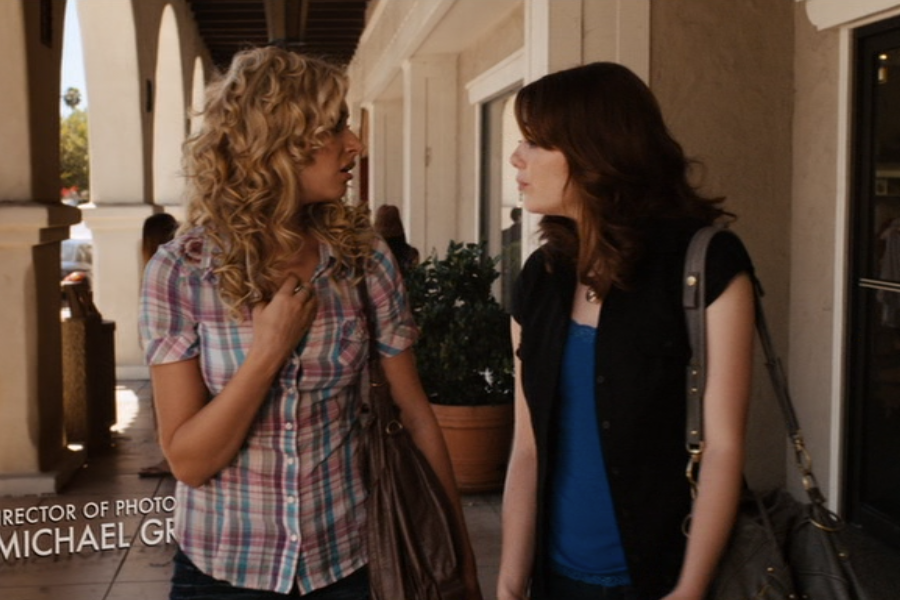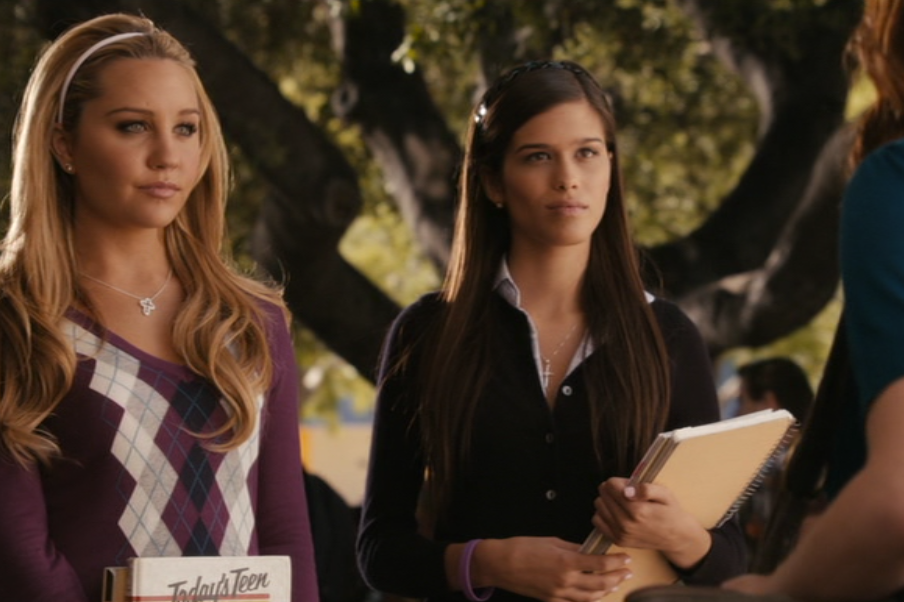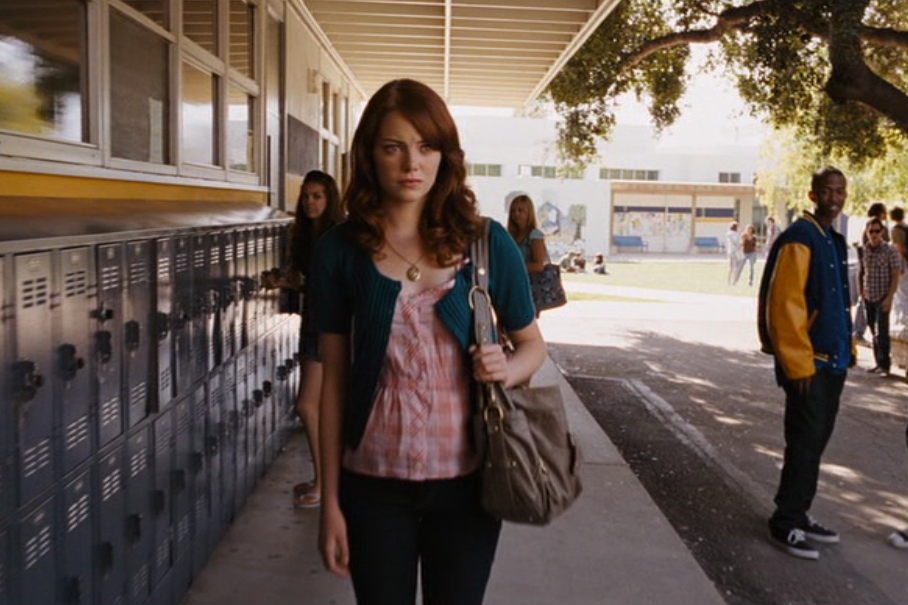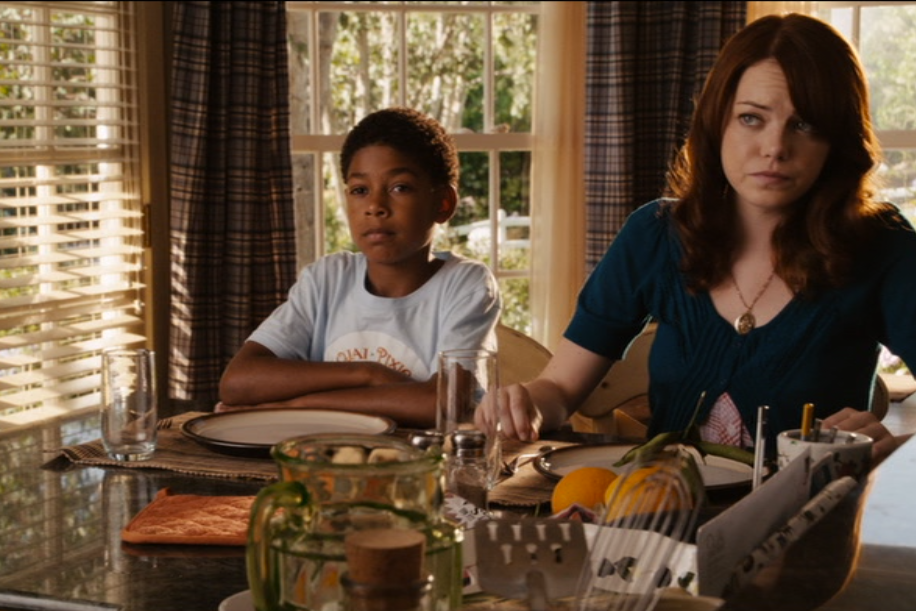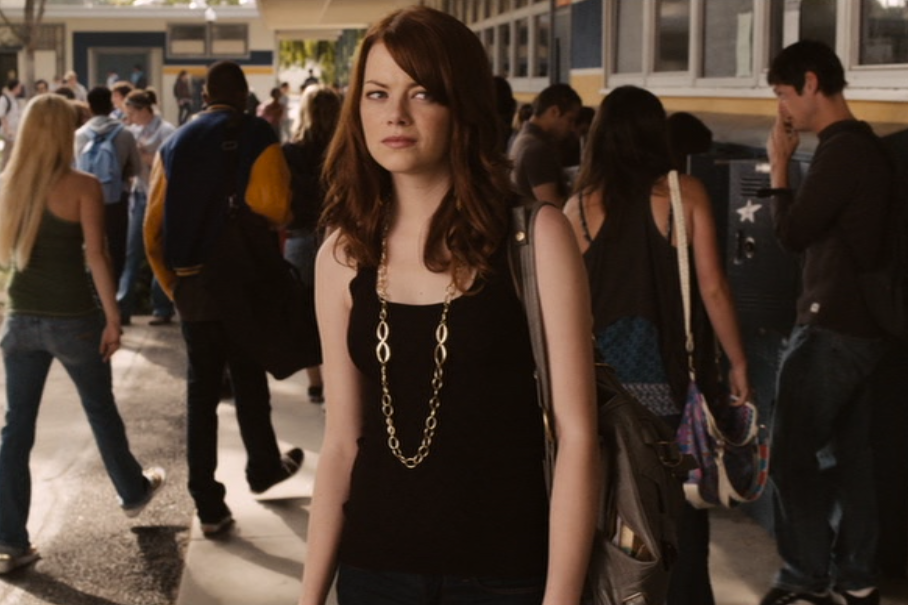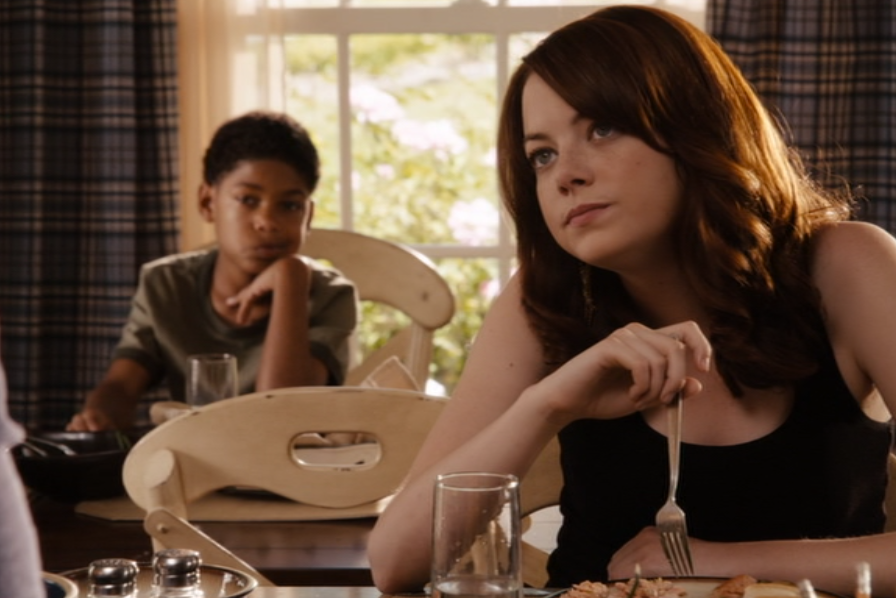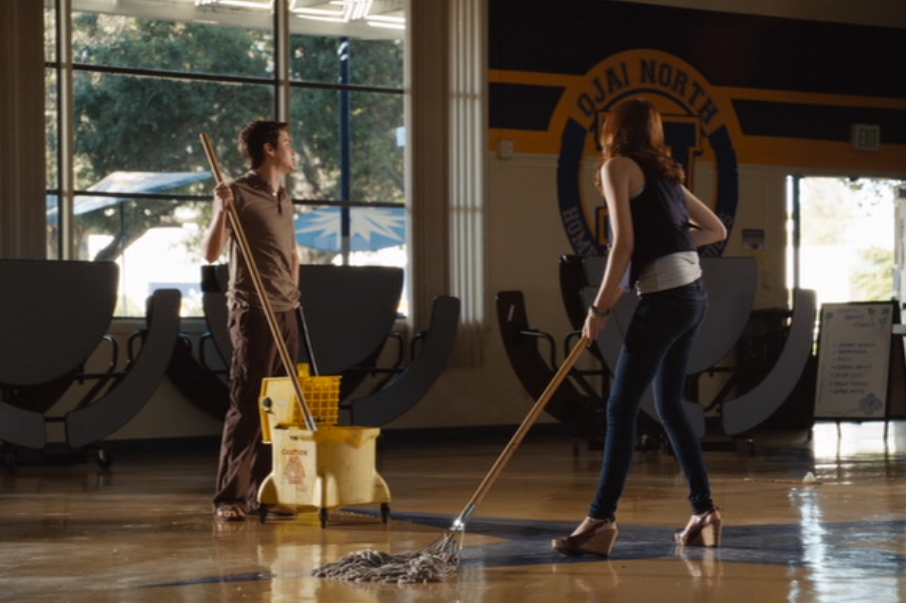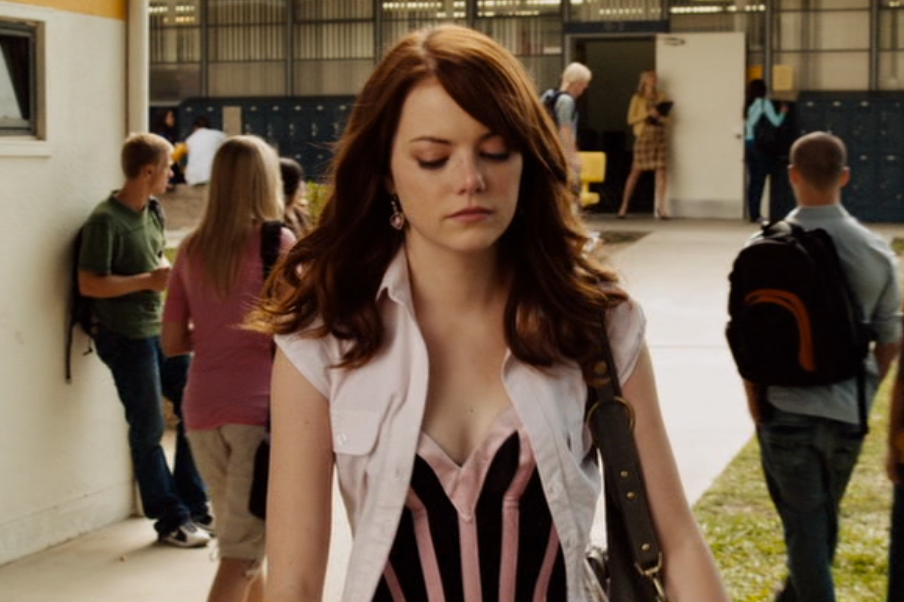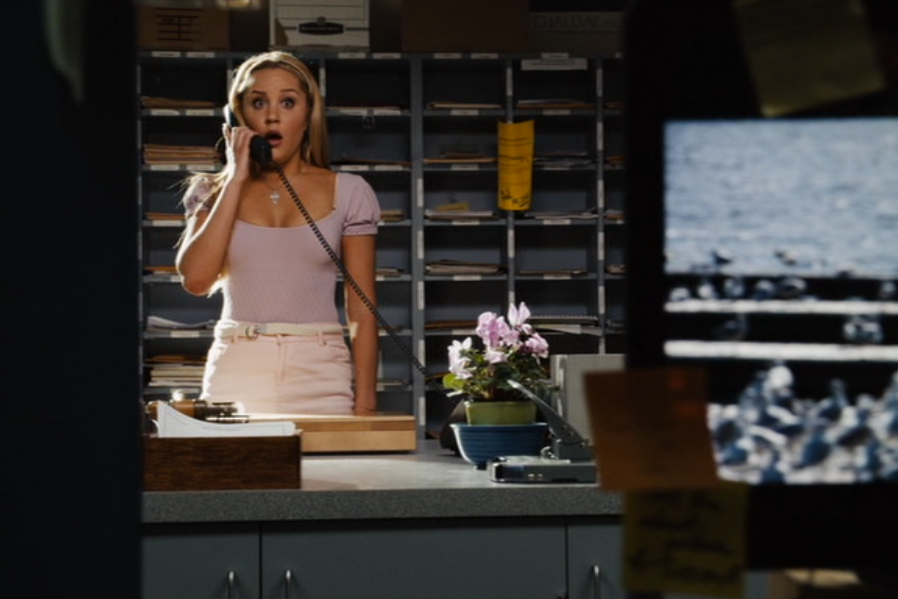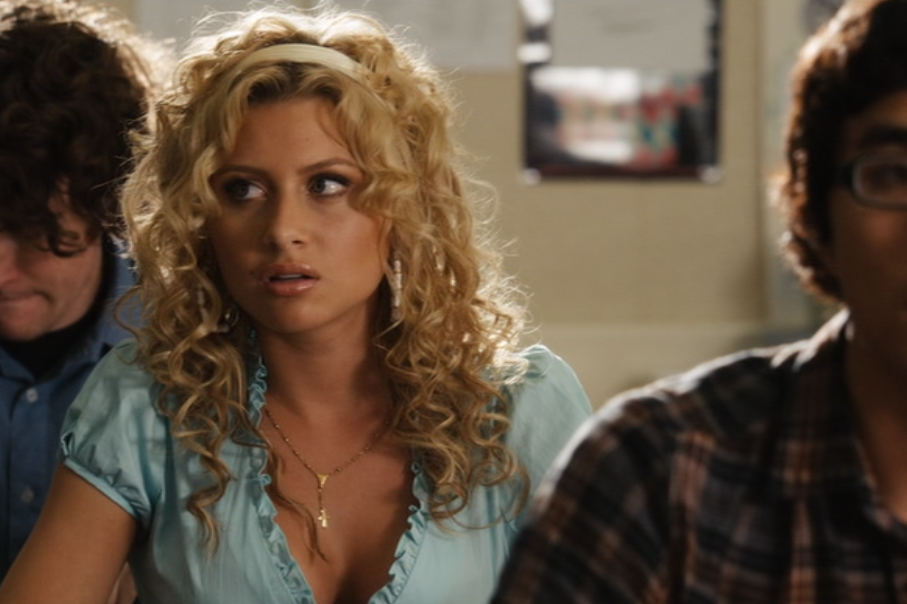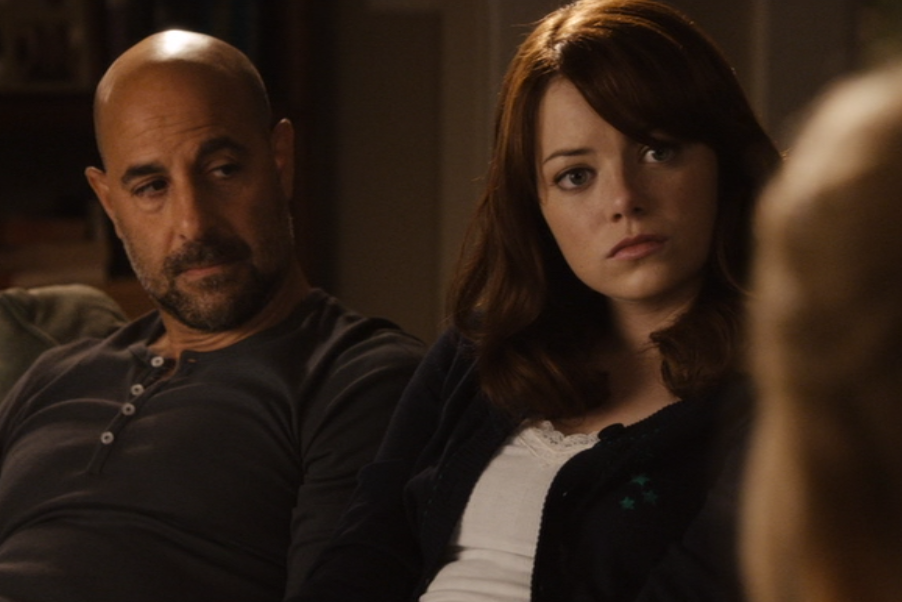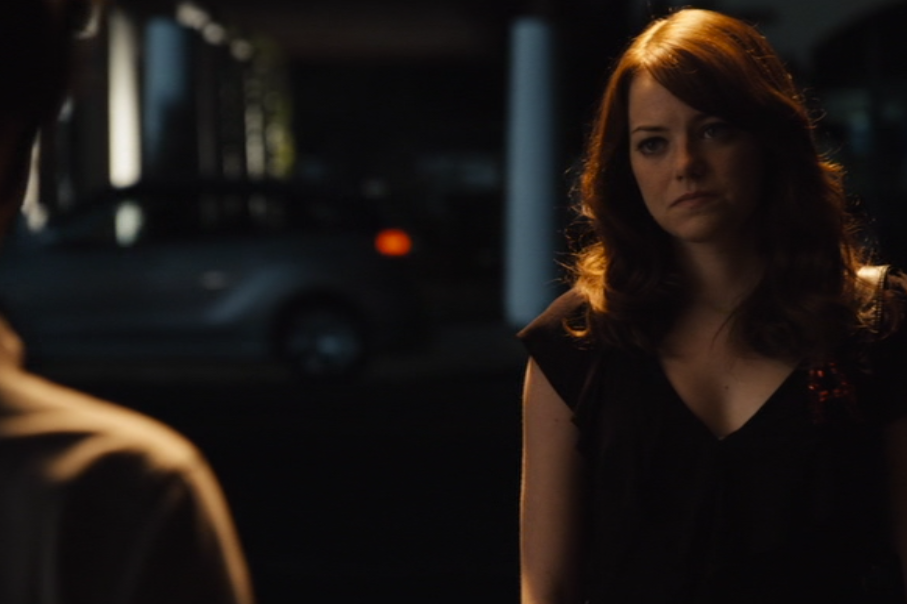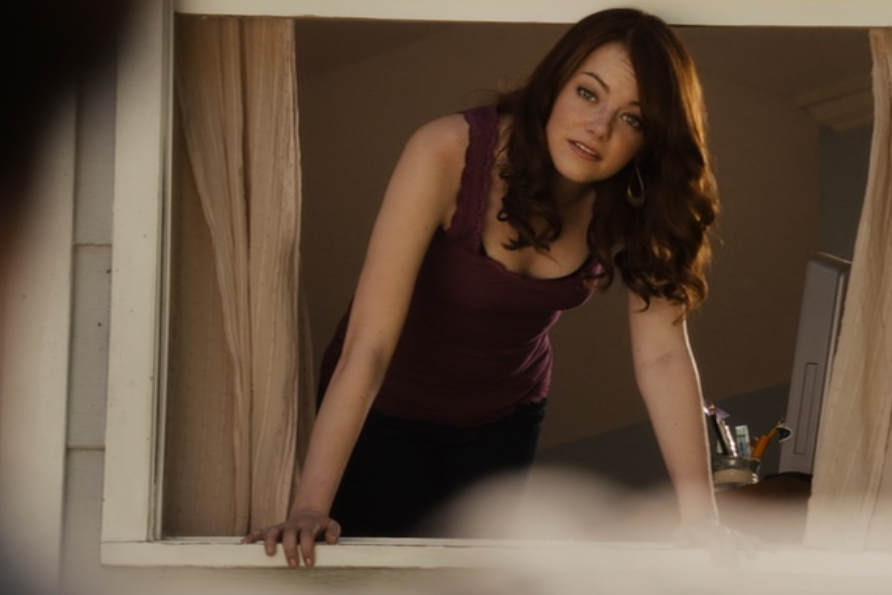Movie Night: Easy A and Its Eighties Influences
In Which Ray-Bans Are the Key to Cool
Originally published on Letterdrop 2/17/2022
[This post contains discussion of sexual assault.]
Easy A makes no secret of its idols: Midway through the film, protagonist Olive Penderghast pauses her narrative to wax rhapsodic on eighties teen movies: “I want John Cusack holding a boom box outside my window. I want to ride off on a lawn mower with Patrick Dempsey. I want Jake . . . waiting outside the church for me. I want Judd Nelson thrusting his fist into the air because he knows he got me. Preferably with a really awesome musical number for no apparent reason.” Say Anything . . ., Can’t Buy Me Love, Sixteen Candles, The Breakfast Club, Ferris Bueller’s Day Off—Olive may be a teenager in 2010, but her ideal teenage existence was written and directed circa 1985 by John Hughes.
The aughts were rife with eighties reflux: Sperrys! 13 Going on 30! “Don’t Stop Believin’”! Reagan and cronies! For younger millennials like myself, the eighties seemed to carry the same appeal that the nineties or aughts now carry for Gen Zers. We were either too young or too unfertilized to remember the decade, and so we experienced it primarily through media—photographs of our young, cool parents, pop music, fun fashion—and yes, teen movies.
But I think this continued interest in eighties teen films went—and goes—beyond nostalgia: After all, the modern idea of a “teenager” really only solidified in the United States post–World War II. John Hughes was born in 1950, amid a rise in youth culture and leisure. It seems only fitting that he became the mastermind behind packaging “teenagerhood” to its second generation, and that this tribute to his and his peers’ work came out only a year after his death in 2009.
Hughes’s movies are simultaneously very big and very small: In his world, the mundanities of teenagerhood feel monumental, worthy of study—as every teenager secretly thinks their life is—but are experienced by a sliver of the teen population. The protagonists of Hughes’s movies are all white, straight, and suburban, and largely middle-class with college-educated parents (Pretty in Pink’s Andie Walsh being a notable exception). When people of color appear in this world, they are usually racist caricatures like Sixteen Candles’s Long Duk Dong.
Easy A doesn’t exactly correct this wrong—the leads are still white, with actors of color relegated to bit parts. And yet, the movie does avoid some of the pitfalls of its eighties predecessors—or hell, its 2005 predecessors. It pays homage to its heroes through costumes and story lines, while also crafting its own unique hero and viewpoint through one Olive Penderghast.
Olive used to be “anonymous, invisible” to guys, she tells us over the opening credits. “Pretty cutting-edge stuff, huh?” she snarks. “A high school girl feeling anonymous . . . Don’t worry, this isn’t one of those tales.” One of “those tales,” of course, is Sixteen Candles—Molly Ringwald’s Sam Baker is so invisible that her family forgets her birthday.
Olive (right) and her best friend, Rhiannon
Olive’s wardrobe, much like Kate’s in John Tucker Must Die, starts off simple, unobtrusive. She has a formula: dark-wash skinny jeans, a lacy tank with a cardigan or open blouse on top, usually accessorized with the same wedges, the same gold locket, the same slouchy gray purse. Her clothes are contemporary (god knows I owned plenty of skinny jeans) but certainly not high fashion or designer. When her younger brother compliments her jeans, Olive cheekily replies, “Thank you. They’re Costco.”
That scarf will become important later!
Olive has two foils: her best friend, the carnal Rhiannon, and her nemesis, the puritanical Marianne (like Virgin Mary, get it?). Rhiannon is the daughter of two nudist (and presumably Fleetwood Mac–loving) free spirits. She hasn’t had sex yet, but she loves talking about it, loves that she’s known around school as “Big Tits.” Her wardrobe consists mainly of tops that highlight said tits and miniskirts, with touches of hippie and rock and roll that reflect her upbringing.
Marianne (left) and her friend Nina
Marianne is the “secretary of the student council, chairman of the Orange Blossom Dance committee, and president of the Cross Your Heart club”—a collective of evangelical students who successfully campaigned to change the school mascot from the Blue Devils to the Woodchucks. Her wardrobe consists of prim and preppy blouses, cardigans, headbands, and skirts—the centerpiece always a silver or diamond cross.
The three girls intersect in a high school bathroom: Marianne overhears Olive telling Rhiannon about her first time—well, lying about her first time. Olive made up a date with a college boy to get out of camping with Rhiannon’s family; when Rhiannon assumes she had sex with her date, Olive falls easily into a lie.
By the next day, Marianne has spread the story all over school. Olive is suddenly no longer invisible to her peers—and guess what, she starts to like the attention. She’s still wearing the same skinny jeans, the same purse, the same wedges, the same locket, but her cardigan is in a brighter color, her plaid tank with a little more structure—the shape almost hinting at the bustiers to come.
Olive and her younger brother, Chip
At home, she buttons up her cardigan, not wanting her parents—as free-range and freewheeling as they are—to learn about the rumors. But at school, she starts to embrace a little more skin and sparkle: a black tank top, no cardigan or blouse to cover her arms, with a gold chain necklace and dangly earrings.
Her English class is studying The Scarlet Letter—a fortuitous coincidence, as Olive is quick to point out. Marianne’s sidekick, Nina, thinks that Hester Prynne and Olive Penderghast are cut from the same slutty cloth: “Perhaps you should embroider a red A on your wardrobe, you abominable tramp.”
“Perhaps you should get a wardrobe, you abominable twat,” Olive replies, with the same energy as George Constanza and his jerk store. Still, she gets sent to the principal and receives detention.
When she tells her parents about detention, her necklace is gone—along with the reason why she called someone a “twat” to begin with.
Olive completes detention with her old friend Brandon. “So what’s with your new look?” he asks as they clean the school tennis courts. “Very whore couture.” Again, Olive is wearing her gold chain necklace, her arms exposed in a white tank top and black vest. And yet, she still pairs them with her same skinny jeans and wedges—only tiny deviations from the norm took her from “invisible” to “whore couture.”
Olive confesses that the rumors aren’t true; she figures she can either blend in or decide not to care. Brandon desperately wants to blend in—his brown polo shirt and cargo pants say as much. He’s regularly beaten up and harassed for being gay, and the principal does nothing but sentence him to detention.
Brandon begs Olive to pretend they’re dating, to give him the same legitimacy that Olive’s own lie gave her. She agrees to attend a party with him, and they fake sex in the host’s bedroom while their fellow students listen, Olive’s red lace thong obscuring the keyhole. Before they leave the room, Olive tucks the thong in Brandon’s pocket as “evidence” (a nod to Sam giving the Geek her underwear in Sixteen Candles, as this article points out, and a foreshadowing of Olive’s own red A).
Brandon wears a jacket that he borrowed from Olive—black leather motorcycle, a classic bad boy reference that was surely intentional on Olive’s part. Olive wears a gold heart necklace, brown knee-high suede boots, and a dress she borrowed from her mom—brown leopard print, to convey the appropriate level of tawdriness.
When Rhiannon finds out Olive “slept” with Brandon, she’s furious: How could Olive not tell her first? Doesn’t she know she’s getting a reputation as a “dirty skank”?
“And you’re a jealous virgin,” Olive snaps—in what I can only hope is an allusion to Clueless.
Olive cleans out her closet, then returns laden with shopping bags from “Guillaume’s of Ojai—Fine Lingerie” (a wink at Easy A’s prop master, Guillaume DeLouche). She angrily cuts A’s out of red fabric and stitches them to her freshly bought bustiers; she’ll be the “dirtiest skank [her classmates have] ever seen.”
The next school day, students part to let the new Olive through: she’s dressed in a black bustier, a red A attached to one breast; a double-strand pearl necklace; black skinny jeans; a small black purse; and black Ray-Ban sunglasses.
The black bustier calls back to the black tank top Olive was wearing when Nina first planted the idea of a scarlet letter—but of course, much more overtly sexual. The black skinnies are a more badass, rock-and-roll version of her usual jeans; the small black purse an impractical version of her slouchy gray bag.
But the pearls and Ray-Bans—those, to me, are the most interesting parts of Olive’s new look, the most referential to her favorite eighties movies. The pearls remind of Ginny, Sam’s older sister in Sixteen Candles. Ginny always wears a strand of pearls, even with the lavender lingerie set that she first appears in. The juxtaposition of the lacy lingerie with the prim pearls captures the space that Olive is trying to navigate—between Rhiannon and Marianne, between attention-getting and invisible.
(Of course, you could also interpret the pearl necklace through the ZZ Top definition—another appropriately eighties reference.)
The Ray-Bans are an even more overt reference, the same brand worn by Ferris Bueller in his titular film; by Bender in The Breakfast Club. For Olive, the Ray-Bans represent coolness and rebellion. She’s not trying to be the invisible Sam—she wants to be the lionized Ferris, the uncontrollable Bender. She sports a shampoo mohawk, narrates her life to the camera—just like Ferris. She defies the (vice) principal—just like Bender. She takes what was always a male role and makes it her own. Olive’s makeover has more in common with the makeover that popular Cindy gives to nerdy Ronald in Can’t Buy Me Love—at one point, literally buying him a pair of sunglasses—than the makeover that “princess” Claire gives to “basket case” Allison in The Breakfast Club. Olive’s transformation isn’t about making her sweeter or more palatable but cooler.
After other downtrodden boys learn what Olive did for Brandon, Olive agrees to exchange fake sex favors for gift cards and discounts—and another rumor spreads that Olive is soliciting money for sex. As she racks up coupons and movie passes, she rotates through more A-embellished bustiers, black skinny jeans, and pearl necklaces. Her English teacher, Mr. Griffith, thinks Olive is taking The Scarlet Letter too far and asks his wife, the school’s guidance counselor, to speak with her.
Mrs. Griffith, forebodingly enough, is wearing a variation on Olive’s black-and-gold look: a black sheath dress, a wide black belt, and a gold necklace. She barely listens to Olive and sends her away with a handful of condoms. As Olive leaves, she runs into Marianne, whose boyfriend, Micah, is there to see Mrs. Griffith. When Olive shows Marianne a bit of kindness, Marianne thinks she’s finally “got[ten] through” to her.
The next day, Marianne is suddenly best friends with Olive. Marianne greets her new friend with a big hug, Olive wearing an open blouse over her black-and-pink bustier and black skinny jeans. The virginal white covers her red A, her sin temporarily erased from Marianne’s mind. Her pearl necklace, too, is gone—and appears later on a surprising character.
While Olive is more covered than usual, Marianne is less: a pink miniskirt, a lavender T-shirt, a thin white headband, and a diamond cross—none of her collared blouses and sweaters. Even Rhiannon, who looks on in disbelief, has changed. She’s wearing a light blue blouse and a pleated skirt—still low-cut and short, but paired with a white headband and a small gold cross. After her fallout with Olive, Rhiannon assumed Marianne and Nina’s puritanical ideas and accessories.
Marianne and Olive’s friendship barely lasts the morning: Micah says Olive gave him chlamydia, but in truth, it was Mrs. Griffith. When Olive finds out, Mrs. Griffith manipulates her into keeping the secret. The relationship is perfectly legal, Mrs. Griffith insists, because Micah was held back a lot and is actually twenty-two. The counselor’s lacy camisole and pearl necklace suddenly make sense—she is the real “Olive,” the person who should feel ashamed for her sexual choices.
At home, Olive sticks to her old clothes: lacy tank tops, cardigans. Her parents have noticed her new school wardrobe, but they still don’t know the extent of the rumors, and Olive seems too embarrassed to tell them.
Olive longs to be asked on a real date, to be wanted for herself, instead of the promise of sexual credibility. Finally, Rhiannon’s crush, Anson, asks Olive out. He takes her to the Lobster Shack, but they sneak out before Rhiannon and Olive’s longtime crush, Todd, see them. In the parking lot, Anson tries to give Olive a gift card for sex, then forces his mouth on hers. When he realizes she isn’t selling, he leaves in a huff.
Even on her date, Olive wears a red A, sequined and stitched to her black dress. In the dark of the parking lot, as she tries to rip it off the dress, the A sparkles, a mocking reminder of the way everyone seems to see Olive.
Then, Todd appears. He’s just finished his shift at the Shack, and he asks if she’s okay, offers to drive her home. He’s never believed the rumors about Olive; after all, a few years ago, they played Seven Minutes in Heaven together, and Olive agreed to lie about their kiss because Todd wasn’t ready for one yet. They want to kiss each other now, but they decide to wait until it’s the right time. Unlike their eighties prototypes, Olive and Todd are respectful of each other’s boundaries; Olive’s assault isn’t minimized or blamed on her. (I’m looking at you, Sixteen Candles!)
Olive wants to come clean, but her witnesses are either gone or selfish assholes (Mrs. Griffith!!). She tells Mr. Griffith, then her mom, who confesses to having her own “reputation” once. Olive is back in a black lacy tank and dark-wash jeans, a bird-shaped pendant and a teal scarf around her neck. The scarf calls back to the yellow scarf Rhiannon wore at the beginning of the movie, the teal cardigan Olive wore on the first day she was no longer invisible. She’s coming full circle, back to honesty.
With “one outfit left,” Olive finally goes for her Ferris Bueller–style musical number. She sings “Knock on Wood” at a school pep rally, dressed in a red-and-black feather boa, fishnet stockings, black Mary Jane heels, and a red-and-black bustier, the garter buckles dangling past her black boy shorts. She’s no longer wearing her red A, just alluding to it with the red bows and lace on her bustier and red feathers in her boa.
Olive invites her classmates to watch her livecast that evening. She’s back to dark-wash jeans and a lacy tank—but a little more color, a little more skin, than at the beginning of the movie. She’s settled into herself, not quite invisible but not looking for more.
The livecast ends when Todd arrives on his neighbor’s lawn mower, holding speakers playing “Don’t You (Forget About Me).” He heard Olive’s speech about eighties teen movies, and he’s there to deliver her fantasy: a mashup of Can’t Buy Me Love and Say Anything . . . and The Breakfast Club. They finally kiss, then ride off on the mower, fists thrust in the air. It’s not about Todd “getting” Olive; they’ve got each other.
[Look out for my third and last teen movie post on Thursday, 3/17. I originally thought I’d publish movie posts through June, but I’m giving precedence to my Gilmore Girls rewatch and other writing projects (and the rest of my free time, of course!). But I promise next month’s post will be extra good <3]
